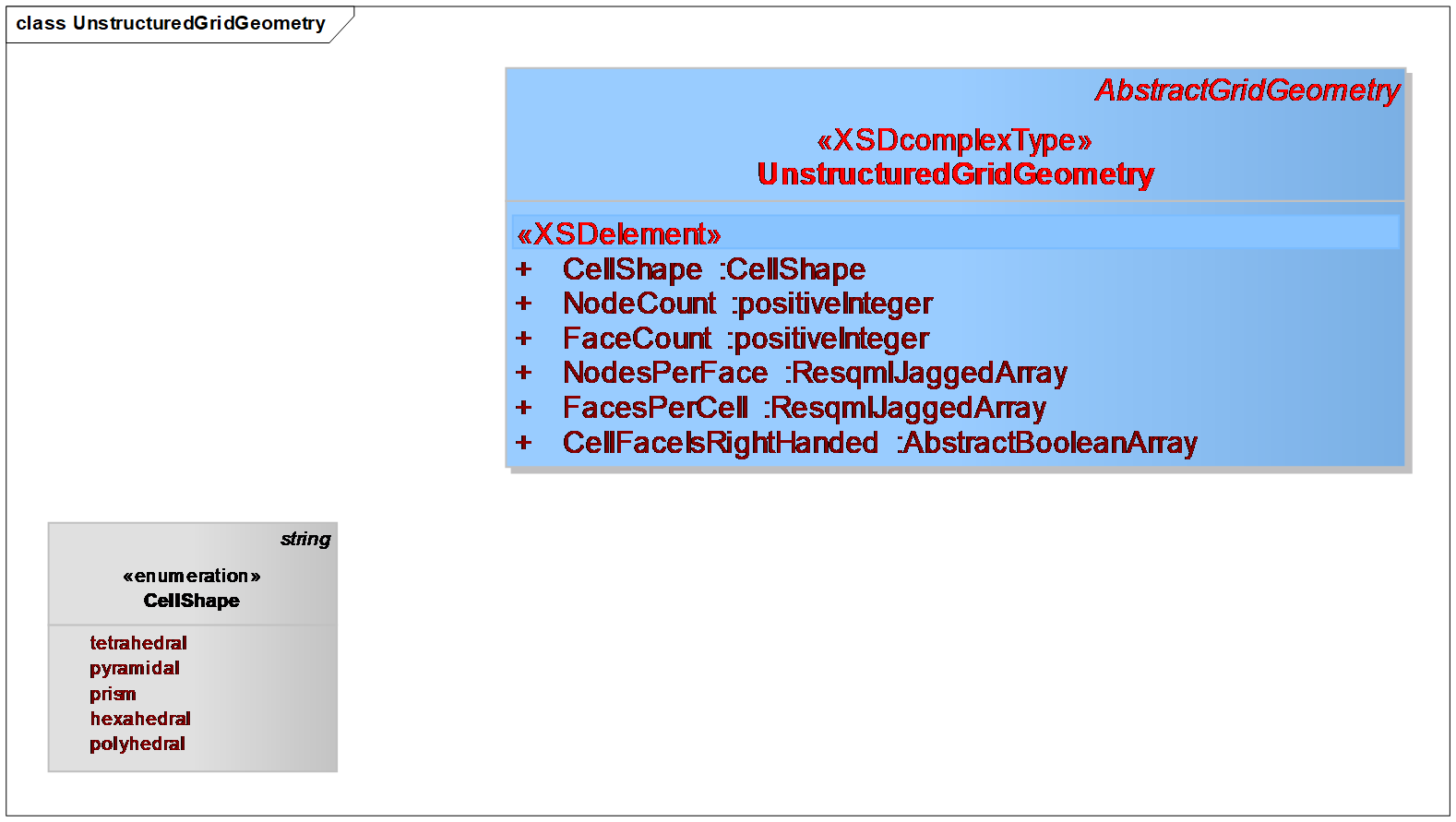11.10.1 Unstructured Geometry
| Topic Version | 1 | Published | 09/11/2015 | |
| For Standard | RESQML v2.0.1 | |||
New to RESQML at v2, are unstructured grids and their geometry, which include support for:
- Block-centered grids, one of the newest reservoir simulator data formats, which lack all geometry and which currently lack a standard industry representation.
- Unstructured grids with cell geometry, which provides a new vendor-independent specification of the grid geometry to complement the existing proprietary reservoir simulator formats and to support more general subsurface workflows.
Figure 11.10.1-1 shows how the geometry of an unstructured cell is defined by a list of (signed) faces, where each face is itself defined by a list of nodes.

Point geometry is attached to these nodes. The sign (or parity) of a cell face is positive if the face normal defined using a right hand rule is outwardly directed.
- For faces with three nodes, the geometry defined is a plane.
- For faces with four nodes, bi-linear interpolation from the unit square is most often used to define a smooth surface. However, some applications have been known to triangulate the surface instead and treat it as two or four planes.
- For faces with five or more nodes, there are a variety of interpolation schemes in the literature. RESQML transfers the node point geometry, but does not specify the method of interpolation other than for hinge nodes, which utilizes triangulation. When an interpolation method is well-known in the industry, e.g., tri-linear interpolation for corner-point cells, the RESQML reader is expected to be consistent with domain usage.
The description of the unstructured grid geometry also includes a cell shape specification. This enumeration is intended to be used by a RESQML reader to determine if a grid instance can be reconciled with an internal application data model. For example, many geomechanical calculations may be restricted to tetrahedral cell shapes.